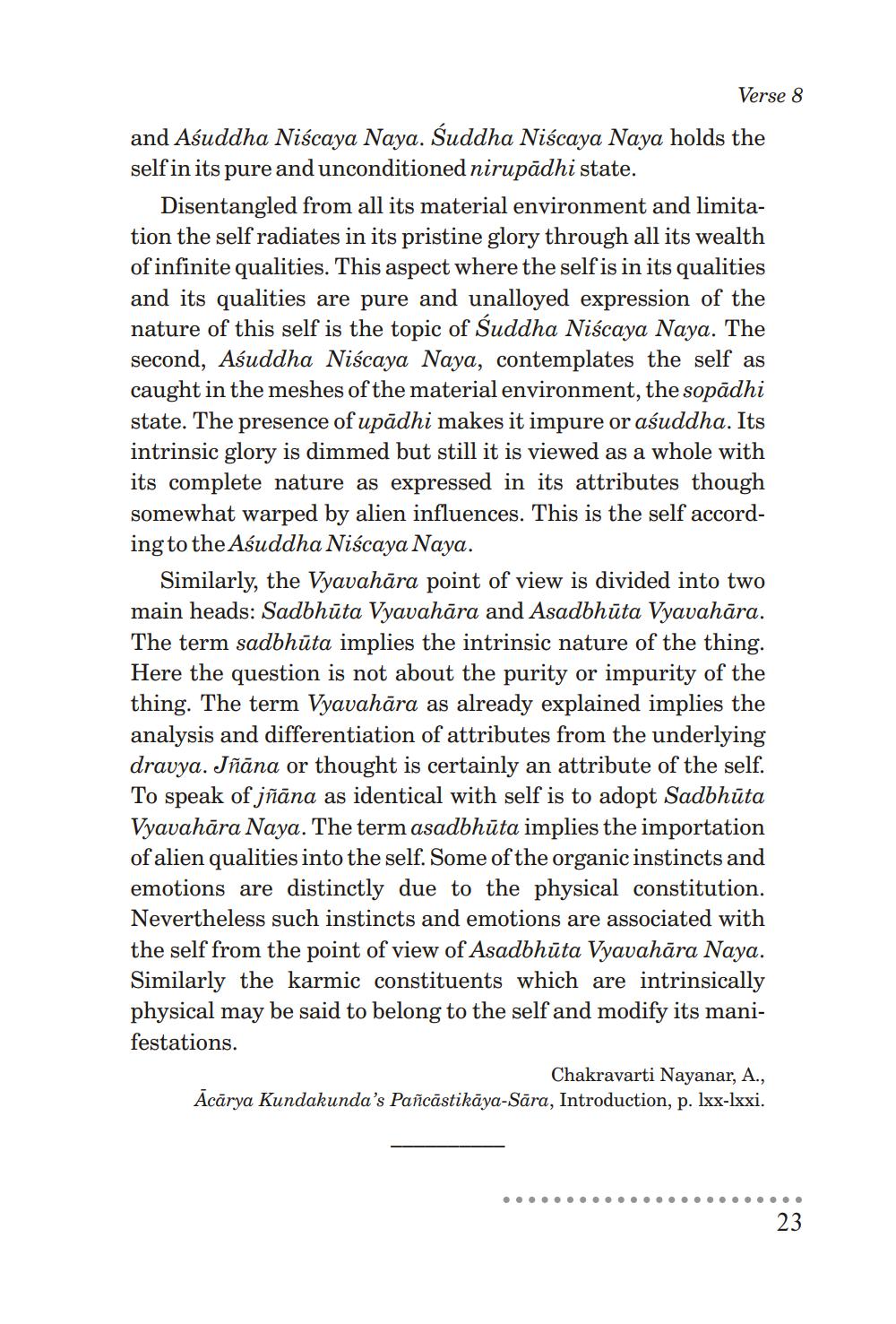________________
Verse 8
and Aśuddha Niscaya Naya. Suddha Niscaya Naya holds the self in its pure and unconditioned nirupādhi state.
Disentangled from all its material environment and limitation the self radiates in its pristine glory through all its wealth of infinite qualities. This aspect where the self is in its qualities and its qualities are pure and unalloyed expression of the nature of this self is the topic of Suddha Niscaya Naya. The second, Aśuddha Niscaya Naya, contemplates the self as caught in the meshes of the material environment, the sopādhi state. The presence of upādhi makes it impure or aśuddha. Its intrinsic glory is dimmed but still it is viewed as a whole with its complete nature as expressed in its attributes though somewhat warped by alien influences. This is the self according to the Aśuddha Niscaya Naya.
Similarly, the Vyavahāra point of view is divided into two main heads: Sadbhūta Vyavahāra and Asadbhūta Vyavahāra. The term sadbhūta implies the intrinsic nature of the thing. Here the question is not about the purity or impurity of the thing. The term Vyavahāra as already explained implies the analysis and differentiation of attributes from the underlying dravya. Jñāna or thought is certainly an attribute of the self. To speak of jñāna as identical with self is to adopt Sadbhūta Vyavahāra Naya. The term asadbhūta implies the importation of alien qualities into the self. Some of the organic instincts and emotions are distinctly due to the physical constitution. Nevertheless such instincts and emotions are associated with the self from the point of view of Asadbhūta Vyavahāra Naya. Similarly the karmic constituents which are intrinsically physical may be said to belong to the self and modify its manifestations.
Chakravarti Nayanar, A., Acārya Kundakunda's Pañcāstikāya-Sāra, Introduction, p. lxx-lxxi.
23




